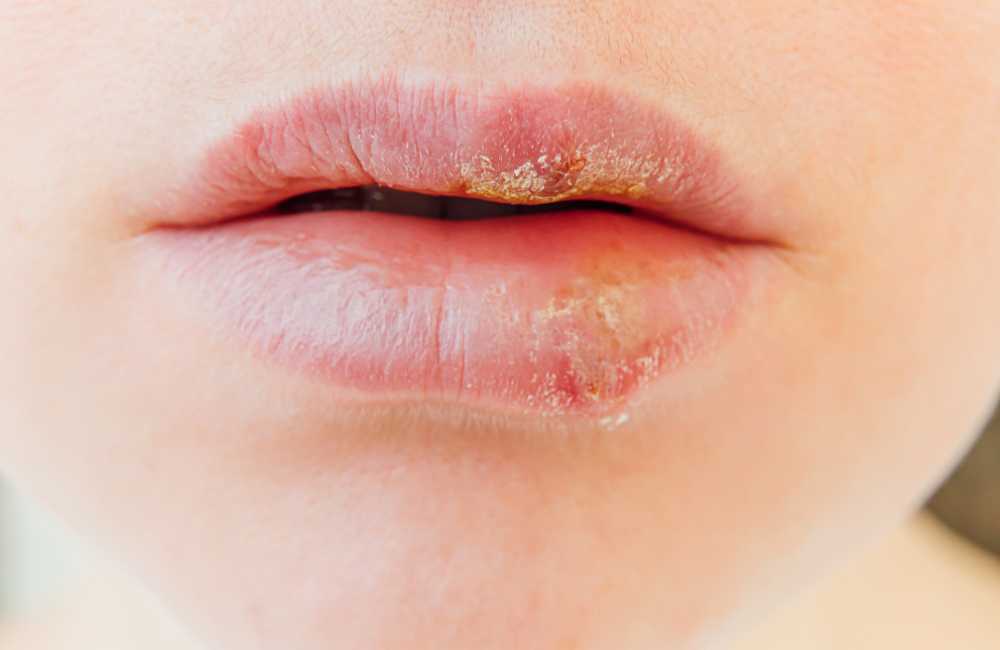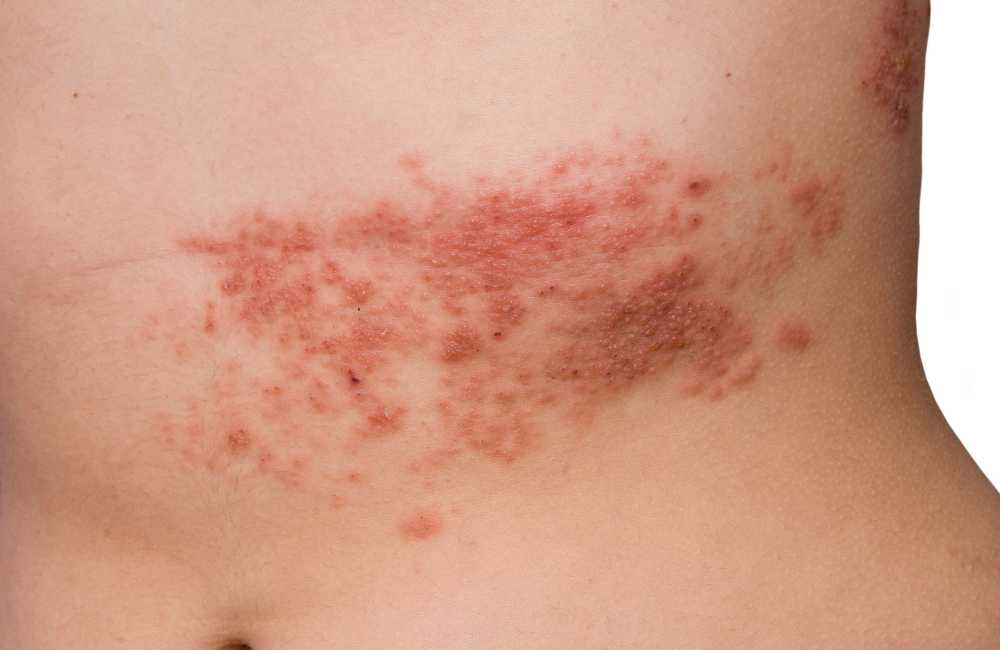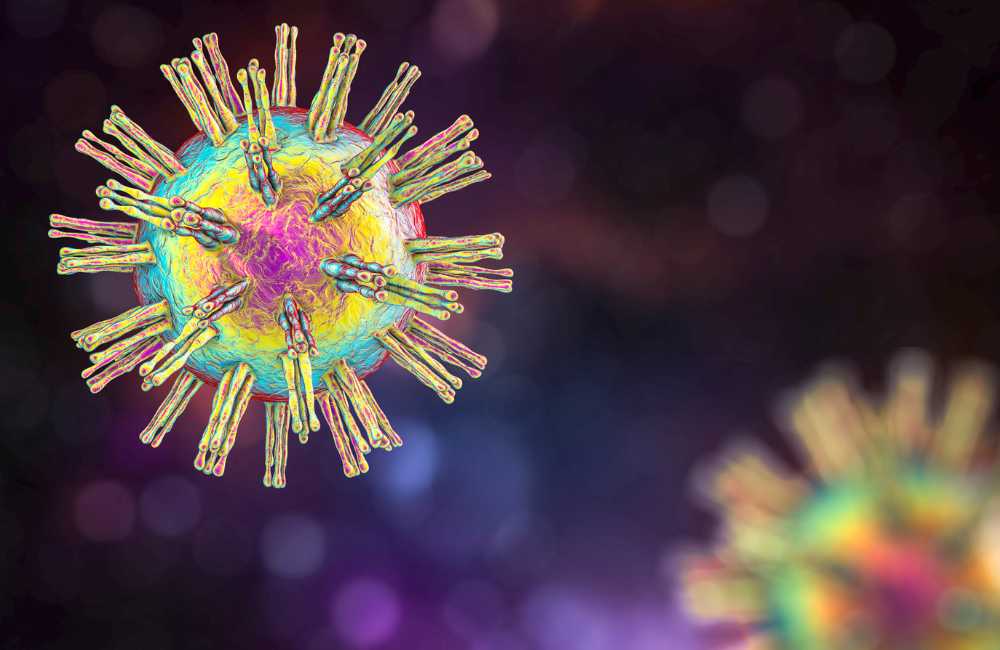Herpes Simplex virus (HSV) infections are part of the 8 herpes viral infection family that affects humans Viz:
| S/N | HERPES TYPE | COMMON NAME | INFECTION CAUSED |
| 1 | Human Herpes 1 | Herpes simplex virus type 1 | Herpes labialis
Genital Herpes |
| 2 | Human Herpes 2 | Herpes simplex virus type 2 | Genital Herpes |
| 3 | Human Herpes 3 | Varicella-zoster virus | Chicken pox and Shingles |
| 4 | Human Herpes 4 | Epstein-Barr virus | Infectious mononucleosis,
Nasopharyngeal carcinoma |
| 5 | Human Herpes 5 | Cytomegalovirus | Cytomegalovirus
(CMV) |
| 6 | Human Herpes 6 | ——- | Roseola infartum |
| 7 | Human Herpes 7 | ———- | Roseola infartum |
| 8 | Human Herpes 8 | Kaposi sarcoma–associated herpes virus | Kaposi sarcoma– |
What is Herpes Simplex Virus?
Most commonly cause recurrent infections affecting the skin, mouth, lips, eyes and the genitals and disseminated infections in immunocompromised patients.
They cause clusters of small painful vesicles on an erythematous (red and inflamed) base. They are of the human Herpesviridae family and 2 common ones are namely
- Herpes Simplex Virus 1 (HSV-1)
- Herpes Simplex Virus 2 (HSV-2)
Herpes Simplex Virus 1 (HSV-1)
HSV-1 is mainly transmitted by oral-to-oral contact, causing oral herpes (including symptoms known as cold sores), but it can also lead to genital herpes.
An estimated 3.7 billion people under age 50 (67%) have HSV-1 infection globally. Most HSV-1 infections are acquired during childhood.

Transmission of Herpes Simplex Virus 1
HSV-1 is mainly transmitted via contact with the virus in sores, saliva or surfaces in or around the mouth. Less commonly, HSV-1 can be transmitted to the genital area through oral-genital contact to cause genital herpes.
It can be transmitted from oral or skin surfaces that appear normal; however, the greatest risk of transmission is when there are active sores. People who already have HSV-1 are not at risk of reinfection, but they are still at risk of acquiring HSV-2.
Herpes Simplex Virus 2 (HSV-2)
HSV-2 is a sexually transmitted infection that causes genital herpes. An estimated 491 million people aged 15–49 (13%) worldwide have HSV-2 infection.
Infection with HSV-2 increases the risk of acquiring and transmitting HIV infection.
Transmission of Herpes Simplex Virus 2
HSV-2 is mainly transmitted during sex through contact with genital or anal surfaces, skin, sores or fluids of someone infected with the virus. Please note that HSV-2 can be transmitted even if the skin looks normal and worse still in the absence of symptoms.
In rare circumstances, herpes (HSV-1 and HSV-2) can be transmitted from mother to child during delivery, causing neonatal herpes.
Symptoms of Herpes Simplex Virus
Oral herpes infection is mostly asymptomatic, but symptoms can include
- Painful blisters or open sores (ulcers) in or around the mouth (cold sores).
- Tingling, itching or burning sensation around their mouth before the appearance of sores. These symptoms can recur periodically, and the frequency varies from person to person.
- One or more genital or anal blisters or ulcers.
- Additionally, symptoms of a new infection often include fever, body aches and swollen lymph nodes. After an initial episode, which can be severe, symptoms may recur.
Genital herpes caused by HSV-1 typically does not recur frequently. With HSV-2, recurrent symptoms are common. However, recurrences are often less severe than the first episode and tend to decrease over time.

Possible Outcomes
- HSV-2 infection increases the risk of acquiring HIV infection by approximately three-fold. Additionally, people with both HIV and HSV-2 infection are more likely to spread HIV to others. HSV-2 infection is among the most common infections in people living with HIV.
- In immunocompromised people, including those with advanced HIV infection, herpes can have more severe symptoms and more frequent recurrences. Rare complications of HSV-2 include meningoencephalitis (brain infection) and disseminated infection. Rarely, HSV-1 infection can lead to more severe complications such as encephalitis (brain infection) or keratitis (eye infection).
- Neonatal herpes can occur when an infant is exposed to HSV during delivery. Neonatal herpes is rare, occurring in an estimated 10 out of every 100 000 births globally. However, it is a serious condition that can lead to lasting neurologic disability or death. The risk for neonatal herpes is greatest when a mother acquires HSV for the first time in late pregnancy.
Diagnosing Herpes Simplex Virus
-
Clinical evaluation
Diagnosis of HSV infection is often clinical based on characteristic lesions.
-
Laboratory confirmation by culture
Tzanck test (a superficial scraping from the base of a freshly ruptured vesicle stained with Wright-Giemsa stain) often reveals multinucleate giant cells in HSV or varicella-zoster virus infection.
Definitive diagnosis is with culture, material for culture should be obtained from the base of a vesicle or of a freshly ulcerated lesion. HSV can sometimes be identified using direct immunofluorescence assay of scrapings of lesions.
-
Polymerase chain reaction (PCR) of cerebrospinal fluid (CSF)
PCR of CSF and MRI are used to diagnose HSV encephalitis.
-
MRI for HSV encephalitis
Treatment for Herpes Simplex Virus
Treatment of primary infection is by the use of antivirus:
- Acyclovir- 400 mg orally 3 times a day for 7 to 10 days
- Valacyclovir – 1 g orally every 12 hours for 7 to 10 days
- Famciclovir – 250 mg orally 3 times a day for 7 to 10 days
Resistance cans occur in immunocompromised patients and as such foscarnet can be used. For secondary bacteria superimposition, topical antibiotics (e.g. Mupirocin) can be useful but in severe infections, systemic antibiotic is employed.
Gingivostomatitis may require symptom relief with topical anesthetics benzocaine (NOTE: Lidocaine must not be swallowed because it can anesthetizes the oropharynx, the hypo pharynx, and possibly the epiglottis while sever cases can be treated with acyclovir
Herpes labialis responds to oral and topical acyclovir. Please, note that treating primary HSV infection with drugs, even if done early, does not prevent the possibility of recurrence. Isolated infections often go untreated without consequence.
Conclusion
The best ways to avoid herpes simplex virus infection especially HSV-2 (genital herpes) are
- Abstaining from sexual contact (vaginal, anal, and oral sex) especially when there are lesions or other herpes symptoms.
- Being in a long-term mutually monogamous relationship with a partner who has been tested and is not infected.
- Using latex condoms correctly and consistently.
However, condoms do not cover all areas that can be affected and thus do not fully protect against genital herpes. Patients should be reminded that they can transmit the infection even when they do not have any symptoms.

